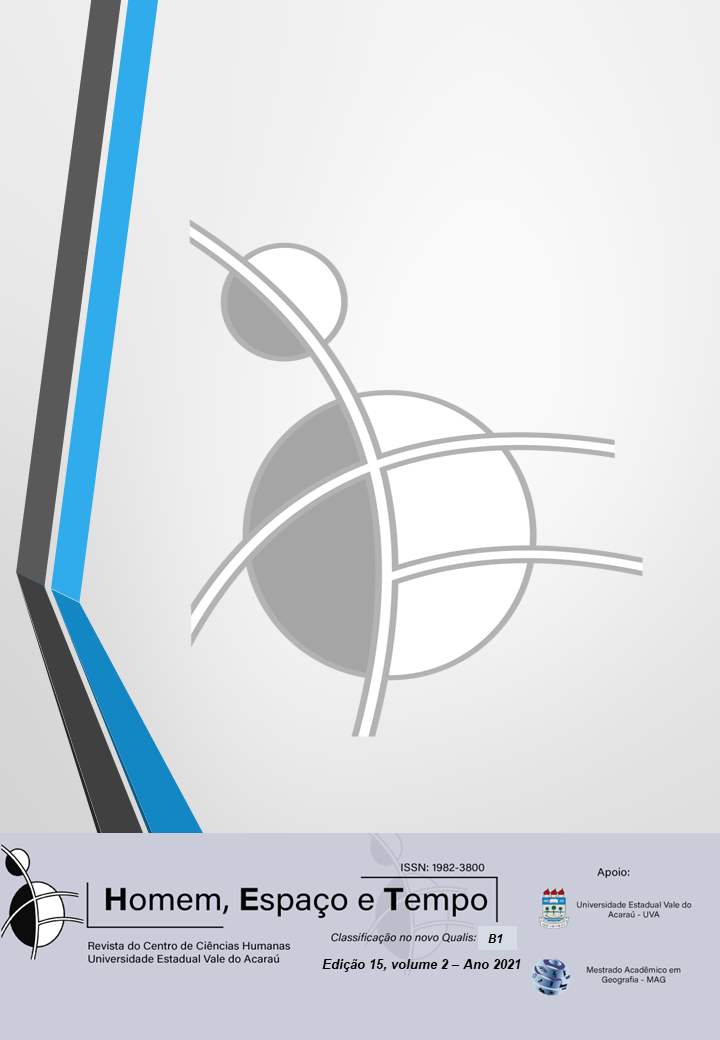An investigation of the metallic railway bridges in Ceará and the construction of a possible ethnographic landscape
Keywords:
Keywords: railway industrial heritage; railway metal bridges; Sobral Railroad (EFS); Baturité Railroad (EFB); ethnographic landscapeAbstract
This investigation on the metallic railway bridges of Granja (1881), Quixeramobim (1884), Caio Prado (1889), Senador Pompeu (1900) and Iguatu (1910) aims to qualify them as part of the set of industrial railways in Ceará. These structures, with innovative technology, are part of an avant-garde ideology from the late 19th and early 20th centuries that helped transform the territory where the Sobral Railroad (EFS) and the Baturité Railroad (EFB) reached. The symbolic relationships of these objects, linked to the socioeconomic actions that helped to develop, constitute a rich and almost unexplored historical-cultural landscape, which may help in the perception of a possible ethnographic landscape in Ceará. This investigation, in addition to listing this hypothesis, presents an iconographic review of these places, indicating a solid organized repertoire for future research.Downloads
References
CAMELO FILHO, José Vieira. A implantação e a consolidação das estradas de ferro no nordeste brasileiro. Tese de doutorado. Universidade Estadual de Campinas - UNICAMP, Campinas, 2000.
CAPELO FILHO, José; SARIMIENTO, Lídia. Arquitetura Ferroviária no Ceará: registro gráfico e iconográfico. Fortaleza: Edições UFC, 2010.
CARLOS, Ana Fani Alessandri. O Espaço Urbano: Novos escritos sobre a cidade. São Paulo: FFLCH, 2007, 123p.
CASTRO, José Liberal de. Pequena informação relativa à arquitetura antiga do Ceará. Fortaleza: Editora Henriqueta Galeno, 1973.
______________. Aspectos da arquitetura no nordeste do país: Ceará. In: História Geral da Arte no Brasil. São Paulo: Instituto Walther Moreira Salles, 1983.
______________. Arquitetura de Ferro no Ceará. Revista do Instituto do Ceará. Fortaleza: Ano CVI, p. 72, 1992.
DIAS, Dayane Julia Carvalho. Secas e epidemias: o contexto da mortalidade em Natal e Fortaleza (1870-1878). In: IX Seminário Nacional do Centro de Memória-Unicamp & I Colóquio Gestão do Patrimônio Cultural. Secas e epidemias: o contexto da mortalidade em Natal e Fortaleza (1870-1880), 2019. (Seminário). Acessado em 19 SET 2020 em https://www.ixseminarionacionalcmu.com.br/resources/anais/8/1565381368_ARQUIVO_TrabalhocompletoCMU-Dayane-Anais.pdf
EVANS, Michael. J; ROBERTS, Alexa; NELSON, Peggy. Ethnographic Landscapes. In: CulturalResource Management vol.24 n.5. U.S. Department of the Interior National Park Service,:Washington: 2001. p.53-56
Frank, B. J. R., & Yamaki, H. T. (2014). DEFININDO O CARÁTER DE PAISAGENS ETNOGRÁFICAS: A COLÔNIA FAZENDA TRÊS BARRAS NO PARANÁ. Revista Do Departamento De Geografia, 27, 196-210.
IBGE. Enciclopédia dos municípios brasileiros. V.16 Municípios do Estado do Ceará, 1959.
IPHAN. Inventário de pontes metálicas do Ceará. In.: Ponte Ferroviária de Granja: estudo para tombamento federal. Instituto do Patrimônio Histórico e Artístico Nacional – IPHAN. Superintendência do Ceará, 2010.
LEFEBVRE, H. La production de l’espace. Paris: Anthropos, 1974.
Moraes, R. R., & Pereira Araujo Filho, P. C. (2020). PONTE METÁLICA DE GRANJA: Resquicio do patrimônio industrial ferroviário do Estado do Ceará. Revista Homem, Espaço E Tempo, 14(2), 170-185.
PANAREDA, João Maria Clopés. Estudio del paisage Integrado. (Ejemplo del Montseny). Barcelona: Revista de Geografia, v. VII, p.157-165, 1973.
PARK, Robert Ezra. 1973 [1925] “A cidade: sugestões para a investigação do comportamento humano no meio urbano”. In: VELHO, Otávio Guilherme (org.). O fenômeno urbano. Rio de Janeiro: Zahar Editores.
TUAN, Yi-Fu. Espaço e Lugar. A perspectiva da Experiência. Tradução por Lívia de Oliveira. São Paulo: Difel, 1983
UNESCO - Paris, 1972U. (1). CONVENÇÃO DO PATRIMÓNIO MUNDIAL, A PROTECÇÃO DO PATRIMÓNIO MUNDIAL CULTURAL E NATURAL, UNESCO – PARIS, 1972. Cadernos De Sociomuseologia, 15(15). Obtido de https://revistas.ulusofona.pt/index.php/cadernosociomuseologia/article/view/336
VIEIRA JUNIOR, A. O. O açoite da seca: família e migração no Ceará (1780-1850). XIII ABEP, Minhas Gerais, 2002.
Downloads
Published
How to Cite
Issue
Section
License
Autores que publicam nesta revista concordam com os seguintes termos: Autores mantêm os direitos autorais e concedem à RHET o direito de primeira publicação, com o trabalho simultaneamente licenciado sob a Creative Commons Attribution License, que permite o compartilhamento do trabalho com reconhecimento da autoria do trabalho e publicação inicial nesta revista. Autores têm autorização para assumir contratos adicionais separadamente, para distribuição não exclusiva da versão do trabalho publicada nesta revista (ex.: publicar em repositório institucional ou como capítulo de livro), com reconhecimento de autoria e publicação inicial nesta revista. Autores têm permissão e são estimulados a publicar e distribuir seu trabalho online (ex.:em repositórios institucionais ou na sua página pessoal) após o processo editorial, já que isso pode aumentar o impacto e a citação do trabalho publicado (Veja o Efeito do Acesso Livre). Autores são responsáveis pelo conteúdo constante no manuscrito publicado na revista. Autores são responsáveis por submeter os artigos acompanhados de declaração assinada de um revisor da língua portuguesa, declaração assinada do tradutor da língua inglesa e declaração assinada do tradutor da língua espanhola ou francesa.


